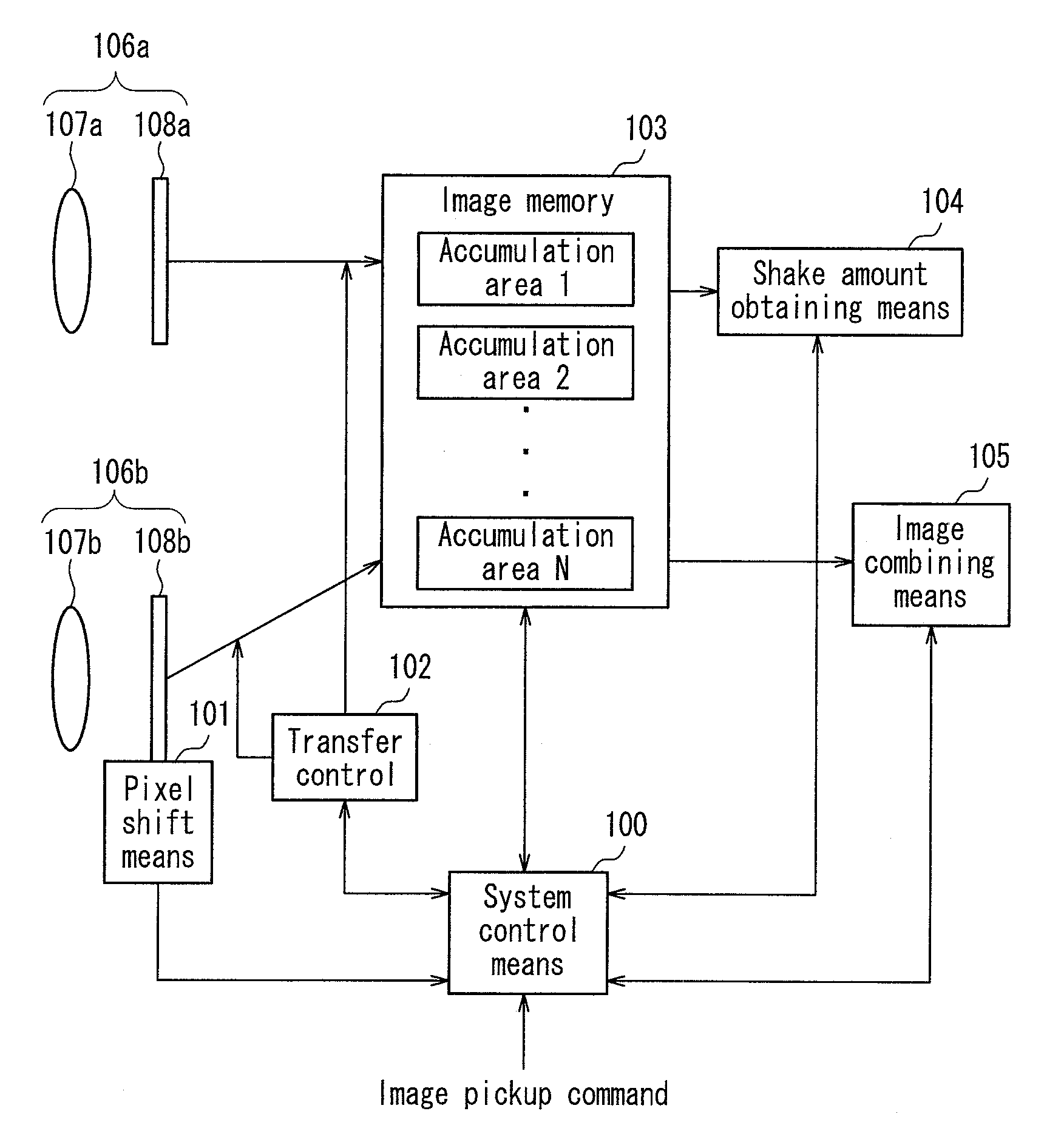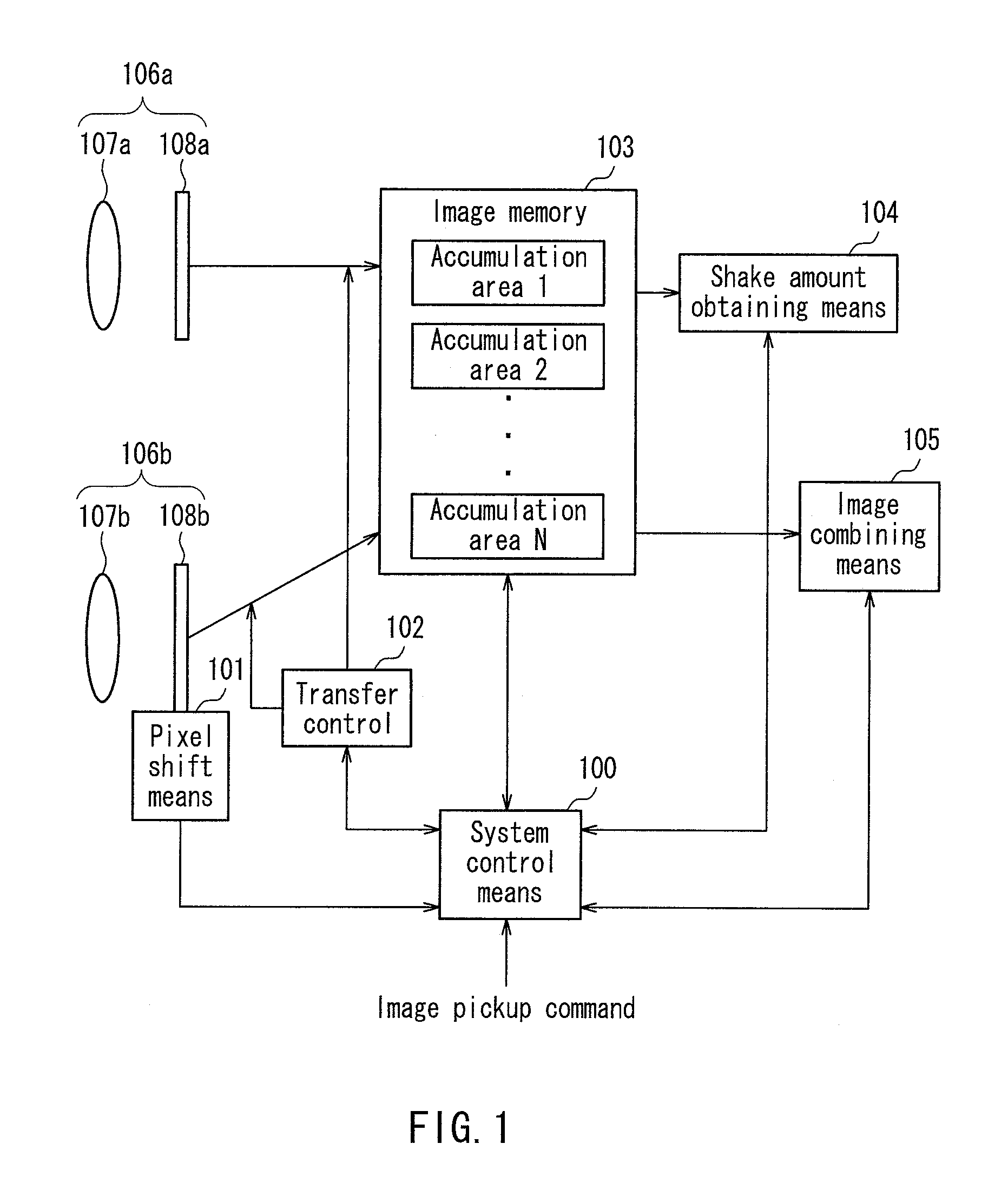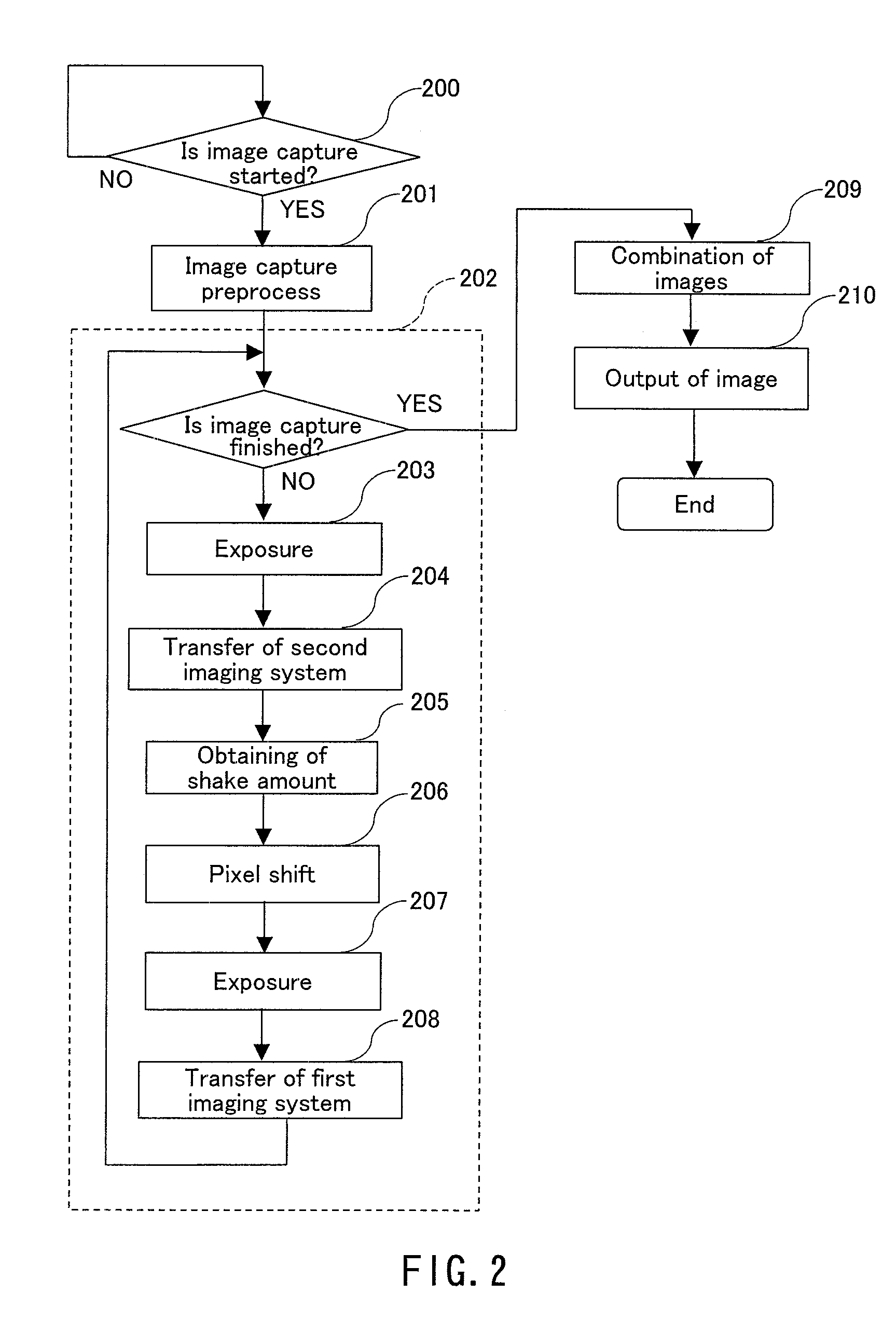Multi-eye imaging apparatus
a multi-eye, imaging apparatus technology, applied in the field of multi-eye imaging apparatus, can solve the problems of unavoidably long apparatus, poor resolution, thick imaging apparatus, etc., and achieve the effect of preventing a reduction in the effect of pixel shi
- Summary
- Abstract
- Description
- Claims
- Application Information
AI Technical Summary
Benefits of technology
Problems solved by technology
Method used
Image
Examples
embodiment 1
[0056]FIG. 1 is a block diagram illustrating a configuration of an imaging apparatus according to Embodiment 1. A system control means 100 is a Central Processing Unit (CPU) which controls the whole imaging apparatus. The system control means 100 controls a pixel shift means 101, a transfer means 102, an image memory 103, a shake amount obtaining means 104, and an image combining means 105.
[0057] An image of a subject (not shown) to be captured is captured using a first imaging system 106b that has the pixel shift means 101 and a second imaging system 106a that does not have a pixel shift function. The subject is imaged on imaging elements 108a and 108b using an imaging optical system 107a and an imaging optical system 107b, and is converted into image information as a light intensity distribution.
[0058] The pixel shift means 101 shifts a relative positional relationship between the subject image formed on the imaging element 108b by the imaging optical system 107b, and the imagin...
example 1
[0097]FIG. 6 illustrates a configuration of an imaging optical system, a pixel shift means, and an imaging element, according to Example 1. As the imaging optical system, two aspherical lenses 601a and 601b each having a diameter of 2.2 mm were used. The lenses were assumed to have optical axes that are substantially parallel to a Z axis in FIG. 6 and have an interval of 3 mm.
[0098] A first imaging system that performs pixel shift was provided with a glass plate 602 on the optical axis of the lens 601b. The glass plate 602 can be tilted with respect to an X axis and a Y axis using a piezoelectric actuator and a tilting mechanism (not shown). In this example, pixel shift was performed by ½ (1.2 μm) of a pixel pitch in a horizontal direction (X-axis direction), thereby doubling the number of pixels. As the glass plate 602, BK7 was used, which is an optical glass having a width (X-axis direction) of 2 mm, a height (Y-axis direction) of 2 mm, and a thickness (Z axis direction) of 500 μ...
embodiment 2
[0103]FIG. 7 illustrates a configuration of an imaging apparatus according to Embodiment 2. Embodiment 2 is different from Embodiment 1 mainly in that a parallax amount obtaining means 700 is added, an imaging element 701 is formed integrally, image capture is performed by a first imaging system and a second imaging system at substantially the same time, and an optimal image selecting means 702 for selecting images to be combined, based on a parallax amount and a shake amount, is added. Portions overlapping Embodiment 1 will not be described.
[0104]FIG. 8 illustrates a flowchart of the whole operation of the imaging apparatus of this embodiment. An imaging start command in step 200 and an image capture preprocess in step 201 are similar to those of Embodiment 1.
[0105] In step 800, image capture is performed using pixel shift. In step 800, a process of exposing the imaging element (step 801), a process of transferring an image of the imaging element to the image memory 103 (step 802...
PUM
 Login to View More
Login to View More Abstract
Description
Claims
Application Information
 Login to View More
Login to View More - R&D
- Intellectual Property
- Life Sciences
- Materials
- Tech Scout
- Unparalleled Data Quality
- Higher Quality Content
- 60% Fewer Hallucinations
Browse by: Latest US Patents, China's latest patents, Technical Efficacy Thesaurus, Application Domain, Technology Topic, Popular Technical Reports.
© 2025 PatSnap. All rights reserved.Legal|Privacy policy|Modern Slavery Act Transparency Statement|Sitemap|About US| Contact US: help@patsnap.com



